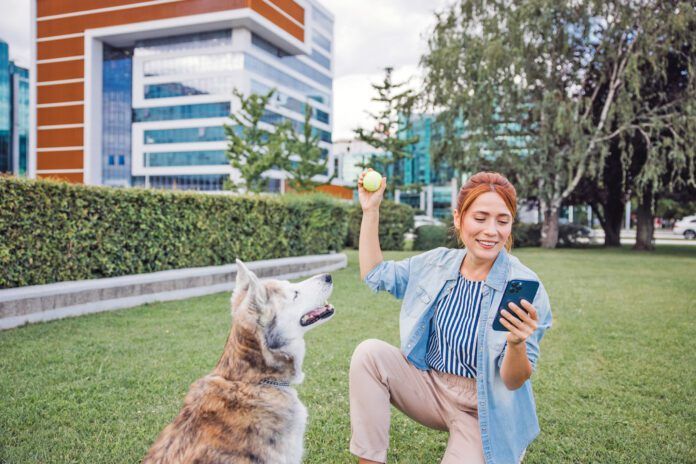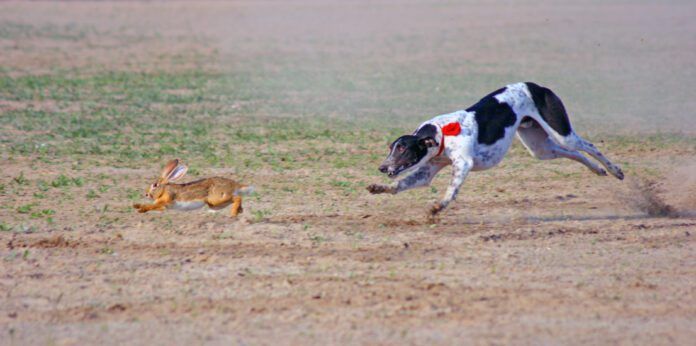Essentials for Your Dog
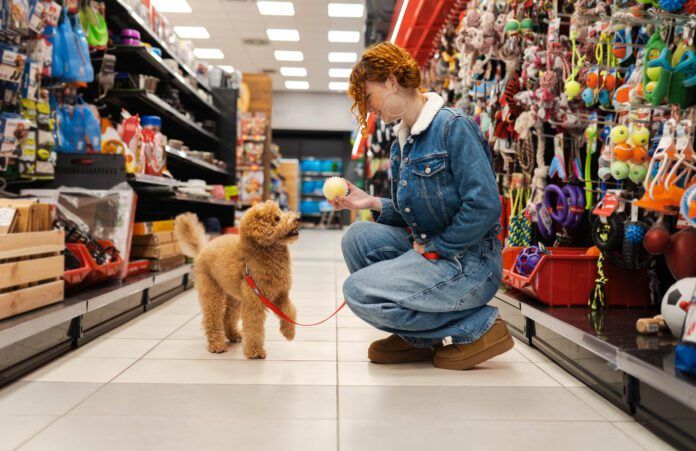
What To Do When Your Dog Is Sprayed by a Skunk

When I think back to the night my dog was sprayed by a skunk, the disaster replays in my mind like a video in fast-forward.
Something furry dashed across the front porch of the Cape Cod, Massachusetts, beach house where we were staying.
"What the heck was that creature?" I thought, wondering what animal paid us a visit. But my dog didn't want to ponder nature; he raced after the fluffy critter.
Join Whole Dog Journal
Already a member?
Click Here to Sign In | Forgot your password? | Activate Web AccessHorner’s Syndrome in Dogs
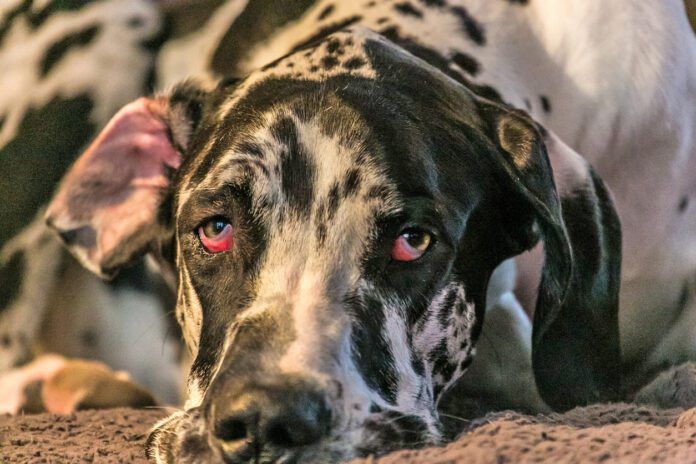
Horner’s syndrome is a neurologic condition that affects your dog’s eye and face, usually on just one side. It helps to have a “normal” side to compare the changed side to. You notice changes when you look at your dog’s face.
It’s not the same as a cross-eyed dog or cherry eye, although cherry eye has some similar features.
With Horner’s syndrome:
- The upper eyelid will droop down
- The eye may seem sunken
- The pupil of the affected eye will be smaller than the pupil in the other eye
- The dog’s third eyelid will be up (partially blocking the eye)
- The eyelid may be red
What Causes Horner’s Syndrome in Dogs?
The cause of Horner’s is normally an injury or irritation to the nerves around the eye, but often the exact insult is not determined. Obvious causes would be a bite wound or a tumor affecting those nerve roots.
Internal ear infections can also irritate the nerves running to those areas. The nerves involved cover a wide range of your dog’s body: chest, head, and neck. That means lots of places for the nerves to be affected.
Because possible causes of Horner’s syndrome include intervertebral disc disease, cervical myelopathy, an inner ear infection, or any trauma, it’s wise to contact your veterinarian.
Sometimes, the cause is unknown (idiopathic). A 2000 study published in the Journal of Neuro-Ophthalmology looked at 155 dogs, 110 of which were Golden Retrievers, with Horner’s syndrome. They found 100 of the Goldens were suffering from idiopathic Horner’s.
What to Do About Horner’s in Dogs
There is no specific treatment, other than time, for Horner’s. Many cases resolve on their own over time, although some stay. Horner’s is not painful. Most dogs function just fine despite their slightly “loopy” appearance.
The Dog’s Third Eyelid
One side effect of Horner’s is that you will now notice your dog’s third eyelid. Normally, the third eyelid is pale and barely noticeable. Some will be pigmented, but they still fit in with the lower lid.
The third eyelid, or nictitating membrane, can have some problems of its own, such as “cherry eye.” When you look at your dog you see a pink or red swelling on the inner corner of your dog’s eye. In cherry eye, the third eyelid and its gland that helps to lubricate the eye, prolapses.
Cherry eye is often bilateral and more common in brachycephalic breeds with short faces. This is usually evident in young dogs. Massage and eye ointments or drops to minimize inflammation may work to stop this condition. More commonly, it will recur, especially in times of allergies such as pollen season.
Surgical Correction for Horner’s Third Eyelid
Your veterinarian can tighten up the tissues surgically to help keep the third eyelid in place. Your veterinarian may refer you to a veterinary ophthalmologist for that.
While the appearance of a prolapsed third eyelid may be disturbing, the condition is not serious or painful. It does warrant a veterinary visit but not an emergency clinic run.
How to Brush the Teeth of an Uncooperative Dog
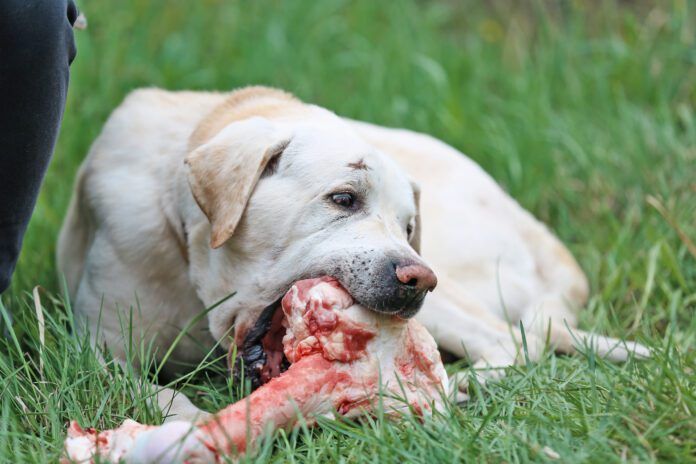
If your dog refuses to let you brush his teeth, you need to become creative. It is, after all, the gold standard of canine dental care and the best method of avoiding a $1,000+ professional veterinary teeth cleaning or, worse, dental extractions.
Toothbrushing Steps for an Unwilling Dog
Training methods that teach your dog to let you brush his teeth abound, but they all involve patience. You know that by now, I’m sure, or you wouldn’t be looking for an alternative!
Just to be sure, at this point, you probably tried a soft brush that fits comfortably in the dog’s mouth and maybe a finger brush, which some dogs find less scary. If you haven’t, that’s step one.
And, of course, you’ve exhausted the flavor options of enzymatic dog toothpastes (never use human toothpaste, which must be spit out), starting with just rubbing some on his gums so he decides maybe it tastes pretty good and eventually allows you to “serve” it on a toothbrush.
You probably also contacted your veterinary clinic to see if there’s a vet tech or a groomer who can train you to brush your dog’s teeth.
If Brushing Your Dog’s Teeth Is Impossible
If you truly tried all those mentioned above (no cheating—did you really?), there are other ways to help fight dental disease in your dog. No, they’re not as good as toothbrushing, but they are way better than doing nothing.
Go to the Veterinary Oral Health Council site. While the VOHC does not conduct research itself, it looks at submitted data to see if various dental products meet their standard for acceptance for fighting plaque or calculus or both in pets. They publish a list of dental products for dogs and cats that have passed their standards. The dog list is truly extensive.
The list includes a variety of options to promote good dental health in your dog. You can start with an easy option: a dental dog food diet. There are 12 diet options listed on the site. Some brands work on just tartar, others work on both plaque and tartar. Some are prescription diets, which tend to be more expensive and require a prescription from your veterinarian, but some are diets directly available to consumers.
Your dog turns his nose up at the new food, even after you worked to gradually change his diet. Don’t despair! There are still ways to improve his dental hygiene.
Dental Chews for Dogs Who Won’t Let You Clean Teeth
The VOHC lists 29 dental chews. One is specially prepared rawhide and the others are edible “treat chews.” Some of the chews have multiple health orientations, like joints and teeth. Research shows that dental chews do make a difference.
My dogs are good about toothbrushing (poultry flavor toothpaste preferred), but on days when I am in a hurry or I see some tartar starting, I often add dental chews. My dogs like the Pro Den Plaque Off Dental Bites, which are like quick treats.
For more chew time, they have also gotten Greenies to chew under observation. I admit I personally like the blueberry ones due to the scent, but I don’t think my dogs care.
Sprays, Gels, and Powders Dog Dental Care
If your dog buries his expensive dental chews out in the yard, oral sprays, gels, powders that you add to food or additives for his water can all help your dog to keep healthy gums and teeth. Remember, the VOHC requests research that shows these products are effective to carry a VOHC seal on the package.
Not on the VOHC charts but sworn by for many owners are raw, uncooked, fresh bones. These can be marrow or knuckle bones. It is important to supervise dogs working on fresh bones. You don’t want to have a marrow bone caught on the lower jaw or teeth getting slab fractures from chewing on an old, dry bone.
Dogs prone to digestive upsets and/or pancreatitis, need to have most of the marrow removed. Ideally don’t leave bones around for more than a day or two so they don’t dry out and harden.
With all these options, something should work for your dog. It may take a bit of trial and error, but everything you do can help your dog maintain adequate dental health and avoid an expensive professional cleaning.
Why High-Fiber Dog Food Is a Game Changer

High-fiber dog foods play an important role in maintaining digestive health, managing weight, and regulating blood sugar levels in dogs. Fiber provides bulk to the diet and supports gut health by aiding in bowel regularity and promoting growth of beneficial bacteria in the gut. While fiber may not be considered an essential nutrient in the same way that protein and fat are, its presence in a dog’s diet can make a significant difference in overall health and well-being.
Among the best choices for a high fiber dog food is Nutro, which makes over-the-counter high-fiber options with natural ingredients and no artificial additives. Wellness CORE and Natural Balance also offer fiber-rich dry and canned food options that include ingredients like pumpkin, peas, and oats to support digestion.
Types of Fiber in Dog Food
There are two main types of fiber, soluble and insoluble, and both serve different functions in the digestive system. Many high fiber dog foods contain a mix of both types of fiber to offer the most comprehensive digestive support.
- Soluble fiber dissolves in water to form a gel-like substance, which can slow digestion and help control blood glucose levels. Soluble fiber can be found in psyllium husk, flaxseeds, and chia seeds.
- Insoluble fiber adds bulk to the still and supports regular bowel movements by moving waste through the digestive tract. Insoluble fiber is present in many fruits and vegetables and bran products.
Should I Feed High Fiber Dog Food?
Dogs that suffer from issues such as constipation, diarrhea, anal gland problems, or obesity can often benefit from diets higher in fiber. Fiber can also help diabetic dogs by regulating glucose absorption and helps support immune function by maintaining a healthy population of beneficial microbes in the gut.
Natural High Fiber Foods for Dogs
Natural sources of fiber can be found in a variety of foods that may be added to their regular diet under veterinary guidance.
Pumpkin is perhaps the most widely recommended natural source of fiber for dogs. Canned pure pumpkin (not spiced/sweetened pumpkin pie filling) or dehydrated pumpkin powder are often used to alleviate both constipation and diarrhea due to its soluble fiber content and gentle impact on the stomach.
Sweet potatoes are an excellent source of fiber and provide beneficial vitamins and antioxidants.
Green beans, carrots, apples, and leafy greens like spinach or kale are rich in fiber and safe in moderation.
Brown rice and oats also contribute fiber to the diet while also providing energy in the form of complex carbohydrates.
Can I Feed My Dog Psyllium?
Some pet owners choose to supplement their dog’s diet with fiber additives such as psyllium husk or beet pulp. Psyllium, the active ingredient in many fiber supplements for humans, can be effective in small amounts for dogs experiencing irregular bowel movements. Beet pulp offers a blend of both soluble and insoluble fibers and supports stool quality while also providing some prebiotic fibers to feed beneficial gut bacteria.
Add Fiber Slowly
When introducing high fiber foods or supplements, it is important to do so gradually, as a sudden increase in fiber can lead to bloating, gas, constipation, or diarrhea as your dog’s system adjusts. Transitioning slowly over the course of a week or more allows the gut microbiome to adapt and reduces the risk of discomfort. Adequate water intake is also essential when increasing dietary fiber, as fiber absorbs water and can lead to constipation if a dog is not well-hydrated.
Incorporating fiber into your dog’s diet can offer a range of health benefits, from improved digestion to better weight management. As with any dietary change, it is important to consult with your veterinarian to determine the right amount and type of fiber to suit your individual dog’s needs.
Oatmeal Baths for Dogs
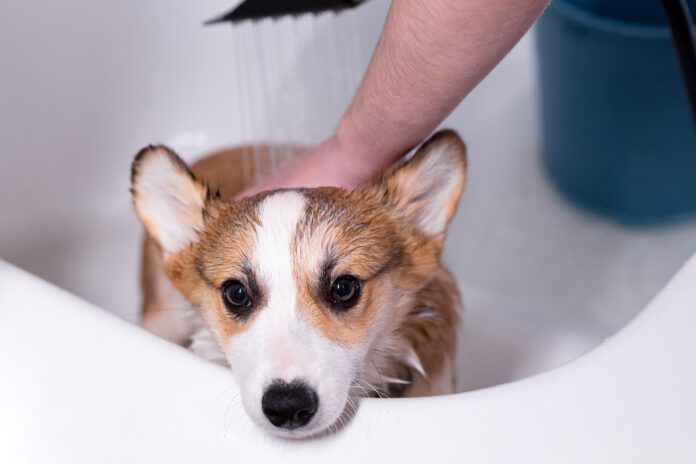
Oatmeal has been used for thousands of years to treat human skin irritations. Likewise, it can be useful for soothing skin issues in dogs.
Oatmeal’s anti-inflammatory compounds reduce redness, itching, and swelling, plus oatmeal forms a protective barrier that preserves moisture and balances the skin’s pH.
The chemical composition of colloidal oatmeal includes a high concentration of starches and beta-glucan, which have protective and water-holding properties, its phenols are antioxidant and anti-inflammatory, and its saponins are natural cleansers.
In 2003, colloidal oatmeal was approved by the U.S. Food and Drug Administration (FDA) as a skin protectant, making it one of the few botanical ingredients with that authorization. Today colloidal oatmeal and oat extracts appear in creams, lotions, gels, shampoos, conditioners, burn treatments, and other products for pets and people.
Colloidal oatmeal is any oatmeal that is so finely ground that it becomes a powder. To make your own, grind or pulse 1 cup of plain, raw, unflavored instant, quick-cooking, steel-cut, or slow-cooking oatmeal or oat groats in a coffee grinder, food processor, or blender. Use the highest setting and process until the oatmeal becomes a very fine powder.
Finely ground oatmeal will rinse away easily, but a simple way to prevent clumping is to strain wet blends through a mesh strainer or stocking, place dry ingredients in a porous fabric bag, tie the oat powder in cheesecloth or gauze fabric, or wrap it in a washcloth or towel that you can soak and squeeze to release the oat water.
Oatmeal baths for dogs can be used to help with conditions such as:
- itchy skin
- hives
- rashes
- burns
- sunburn
- allergies
- dry skin
- dandruff
- dermatitis
- eczema
- hot spots
- inflammation
- insect bites
How To Give Your Dog a Bath with Oatmeal Shampoo
Dozens of oatmeal shampoos have been developed for dogs and puppies, such as DermAllay Oatmeal Shampoo, EarthBath Oatmeal & Aloe Dog Shampoo, Honest Paws 5-in-1 Oatmeal Dog Wash, and Tropiclean Oatmeal Itch Relief Shampoo for Pets.
For safety, have your dog stand on a non-skid mat or towel. Thoroughly wet your dog’s coat and skin with comfortably cool or tepid water. Cool water has a soothing effect of its own, while warm or hot water can exacerbate skin irritations. So can vigorous rubbing as you massage products into the skin or rub the coat with towels. To speed recovery and healing, keep your movements slow, calm, and gentle.
Apply oatmeal shampoo to your dog’s neck, back, and areas of skin discomfort or itching. Progressively massage oatmeal shampoo into the coat and skin, keeping suds away from your dog’s eyes, nose, and mouth. Massage the inside legs, skin folds, feet, ear flaps, and under the tail. Leave the shampoo in place for 5 to 10 minutes so the oatmeal’s healing compounds reach all the skin and coat. Thoroughly rinse your dog with large amounts of cool or mild-temperature water. Allow your dog to shake herself off, then finish drying her with towels. Comb or brush long-haired dogs, being gentle on and around affected areas. High-temperature blow drying is not recommended because it can increase irritation and discomfort in affected areas.
Oatmeal shampoos can be used alone or followed by an oatmeal conditioner such as Vetoquinol Aloe & Oatmeal Conditioner, DermAllay Oatmeal Spray Conditioner, or Zesty Paws Oatmeal Anti-Itch Dog Conditioner. Follow label directions.
Do-It-Yourself Oatmeal Shampoo for Dogs
The easiest and least expensive way to help your itching pup is to make your own oatmeal shampoo. This formula works well for puppies and adult dogs:
- 1/4 cup unscented castile soap, such as Bronner’s Unscented Baby Wash, Burt’s Bees Fragrance-Free Baby Wash, or any unscented baby shampoo or soap labeled for use with dogs or puppies
- 2 cups lukewarm water
- 1/2 cup finely ground oats or oatmeal
Mix or blend these ingredients well, then apply as described above.
Do-It-Yourself Dog Oatmeal Conditioner
- 1 cup lukewarm water
- 2 tablespoons aloe vera gel
- 1/4 cup finely ground oats or oatmeal
Combine these ingredients in a blender or shake them in a jar until thoroughly combined. Pour the blend into a spray bottle, straining it if necessary, and apply it to your dog, then massage or brush it through the coat. Let the conditioner stand for 5 to 10 minutes before rinsing with plain water. This blend is safe to apply to your dog’s face, nose, and eye area.
Do-It-Yourself Oatmeal Paste to Soothe Dog Skin
Create a paste with ground oatmeal and water for direct application to insect bites, rashes, hot spots, or especially itchy areas. Start with equal parts colloidal oatmeal and water, such as 1/2 cup of each. If you need more, double the recipe. You want a paste that will be easy to apply and that will adhere to your dog’s skin and coat.
Gently massage the paste into affected areas so that the paste reaches all the way to the skin, then cover it with a damp towel or cloth or spray the applied paste with water to maintain moisture, and keep your dog still for 5 to 10 minutes before rinsing it off. This treatment can be applied more than once a day if needed.
How To Make an Oatmeal Soaking Bath for Your Dog
An oatmeal soaking bath is different from an oatmeal shampoo because it doesn’t involve soap. Its key ingredients are finely ground oatmeal and a tub, bucket, or basin of tepid water. Oatmeal baths are recommended for uncomfortable skin problems, everything from flea bites to allergic reactions, itchy skin, and rashes.
The most well-known oatmeal bath is Aveeno’s Soothing Oatmeal Bath Treatment, whose only ingredient is colloidal oatmeal.
To make a colloidal oatmeal bath for your dog:
- In a blender or food processor, grind 1 cup of plain, uncooked oatmeal until it becomes a fine powder.
- Stir the ground oatmeal into a tub, bucket, or large basin of comfortably warm or cool water.
- Place your dog in the bath and sponge the oatmeal water over your dog or place your dog in a T-shirt that you soak with bath water. The goal is to thoroughly cover all your dog’s skin with the soothing oatmeal water. Plain oatmeal bath water is safe to apply to your dog’s face and nose.
- Leave the oatmeal water in direct contact with your dog’s skin and coat for 10 to 15 minutes.
- Gently rinse well and pat dry with towels.
How Often Should You Give Your Dog an Oatmeal Bath?
Most experts recommend giving dogs oatmeal baths as needed. For example, a healthy dog whose coat is in good condition might benefit from a monthly oatmeal bath, while a dog with environmental allergies and really itchy skin could have two or three oatmeal baths per week until symptoms subside.
What If Your Dog Has Sensitive Skin?
Oatmeal baths are well tolerated by dogs and puppies, but if your dog has a history of topical allergies, try a patch test first. Create a paste by mixing finely ground oatmeal with a small amount of water and apply a dab to your dog’s bare abdomen, inner thigh, or behind the ear. Gently massage the oatmeal, then leave it in place for up to 24 hours. Check for any redness, swelling, or irritation before and after rinsing the area. If the skin looks undisturbed, your pup should enjoy good results from oatmeal treatments. You can patch-test oatmeal shampoos or conditioners by placing a small amount of diluted product on a small area of bare skin and observing the result. If your pup experiences any redness, swelling, itching, or irritation, rinse the area well and choose a different product.
Unleashing the Truth: The Benefits and Science Behind High-Protein, Low-Carb, and Ketogenic Dog Food
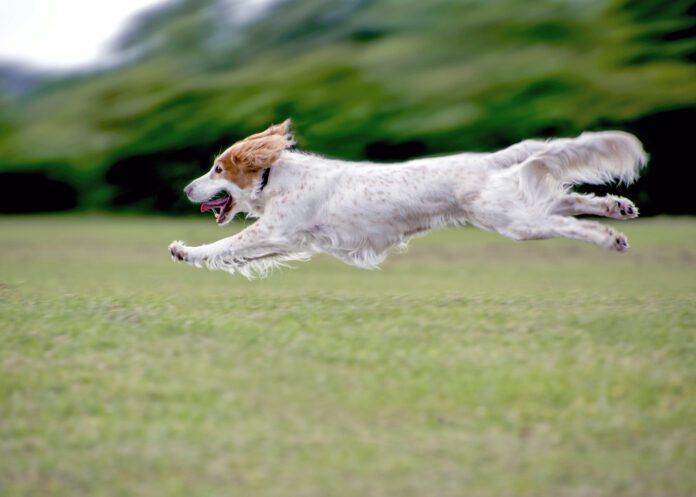
As the field of canine nutrition continues to evolve, more pet owners are turning their attention to diets that mimic the natural eating habits of dogs’ wild ancestors. In this pursuit, diets that are high in protein and fat, and low in carbohydrates, are gaining significant traction. This nutritional model is often linked to improved weight management, reduced inflammation, better skin and coat health, and in some cases, may even contribute to the management of certain chronic conditions.
High-protein, low carbohydrate diets are designed to support lean muscle maintenance, promote healthy metabolic function, and reduce the likelihood of blood sugar spikes and energy crashes. These diets closely resemble what dogs would eat in the wild—a meal made up primarily of animal protein and fat, with very few carbohydrates. By contrast, most kibble diets contain high inclusions of grains or starchy vegetables such as corn, wheat, rice, peas, and potatoes. While these ingredients help bind the kibble and make it shelf-stable, they contribute a significant carbohydrate load to the diet.
Best Low Carb Dog Food Ingredients
The best low-carbohydrate dog foods, particularly those that are dry and commercially available, are typically marketed as grain-free or high-protein formulas. However, the term “grain-free” can be misleading. Many of these formulations substitute grains with other starchy ingredients such as legumes, sweet potatoes, or tapioca. Although grain-free, these substitutes still contribute to the carbohydrate content and may not deliver the metabolic benefits associated with a true low-carb diet. Identifying low-carb dry dog food requires careful label reading and an understanding of the nutritional breakdown beyond what is printed on the bag.
In low-carb dry dog food, the protein content should be derived from high-quality animal sources that provide the essential amino acids dogs need for muscle repair, immune function, and enzyme production. High protein intake is especially important for active dogs, working breeds, and seniors, who are prone to muscle wasting and require extra support to maintain lean body mass.
When transitioning a dog to a high-fat, low-carbohydrate diet or a ketogenic regimen, it is important to do so gradually. Sudden changes can lead to digestive upset, and some dogs may require a period of adjustment as their metabolism shifts to accommodate the new fuel source. During this transition, it is helpful to observe changes in energy levels, appetite, stool consistency, and coat condition to ensure the dog is adapting well. Over time, many owners report positive changes, including increased stamina, reduced itching or inflammation, improved coat shine, and more stable behavior and mood.
High Fat Dog Food
Equally important in this dietary approach is the fat content. High-fat dog food plays a crucial role in energy production, particularly when carbohydrate intake is minimized. Fats supply more than twice the energy per gram than proteins or carbohydrates and serve as a dense fuel source for dogs, especially those engaged in high levels of activity. In addition to being a source of energy, dietary fat supports cell structure, hormone production, nutrient absorption, and the maintenance of healthy skin and coat. Brands such as Stella & Chewy’s Super Beef Frozen Raw Dinner Morsels and Instinct Adult Frozen Frozen Raw Bite 85% Alaskan Pollock Recipe are low-carb options available on the market for pet owners looking for a low-carbohydrate food.
High-Protein, High-Fat Dog Food
A high-protein, high-fat dog food closely aligns with a ketogenic “keto” diet model. The ketogenic diet for dogs is an even more specialized nutritional approach that deliberately shifts the dog’s metabolic state from glucose-burning to fat-burning. When carbohydrate intake is sufficiently low and fat intake is high, the dog’s body enters a state known as ketosis. In ketosis, the liver converts fat into molecules called ketones, which serve as an alternative energy source to glucose. This metabolic shift may offer therapeutic benefits for dogs with certain health conditions such as epilepsy, obesity, diabetes, and even some types of cancer, where controlling blood sugar and insulin spikes is a priority.
Unlike traditional dog foods, keto diets for dogs are designed with macronutrient ratios that mirror a true ketogenic profile—typically consisting of about 70% to 80% fat, 20% to 30% protein, and very few carbohydrates, usually less than 10%. These diets can be commercially purchased as raw, freeze-dried, or gently cooked formulations, or even prepared at home under veterinary guidance. A proper ketogenic dog food must be carefully formulated to avoid nutrient deficiencies and ensure adequate intake of essential vitamins, minerals, and amino acids. Unlike humans, for whom ketosis is often used as a method for weight loss or performance enhancement, a keto diet for dogs is primarily adopted for its therapeutic applications.
Ketosis in Dogs
Achieving and maintaining ketosis in dogs requires strict adherence to the macronutrient ratios. This means avoiding starchy treats, table scraps, and other hidden sources of carbohydrates that can knock a dog out of ketosis. Monitoring your dog’s response is also essential, as not every dog is a candidate for a ketogenic diet. Dogs with pancreatitis, fat-malabsorption disorders, or certain liver conditions may not tolerate high-fat intake well and should be evaluated by a veterinarian before any dietary transition.
The rise in popularity of ketogenic and low-carb feeding approaches has led to a new generation of specialized products on the market. Brands offering keto dog food have begun to focus not just on macronutrient content but also on ingredient quality, sourcing proteins and fats from grass-fed meats, wild-caught fish, and organic oils such as coconut or olive oil. These premium diets may also incorporate anti-inflammatory nutrients like omega-3 fatty acids and antioxidants to support immune function and reduce oxidative stress. Brands such as Bones & Co. and Ketona offer keto-friendly, ready-to-feed, complete and balanced diets for pet owners looking for a keto diet for their pets.
While keto and low-carb diets are not appropriate for every dog, they can offer significant benefits when used appropriately and under veterinary supervision. For pet owners considering this type of feeding, it is recommended to start by consulting with a holistic or integrative veterinarian who can help assess the dog’s individual needs and health status. Bloodwork may be necessary to ensure the diet is safe and to monitor for any changes that might indicate metabolic stress or nutrient imbalances.
In the world of canine nutrition, the one-size-fits-all model is quickly becoming obsolete. Dogs are individuals with unique health profiles, lifestyles, and genetic predispositions. What works for one may not work for another. However, the increasing interest in high protein, low-carb, and ketogenic dog food is indicative of a broader trend toward biologically appropriate feeding and a desire to give pets the best possible chance at a long, vibrant life.
The Best Dog Camping Gear
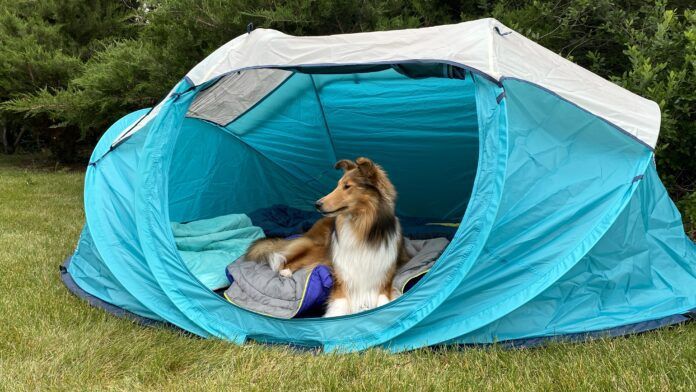
Dogs and the outdoors go hand-in-hand. Whether you love hiking mountain peaks or just lounging at basecamp, dogs make great outdoor adventuring companions. Beyond a treat pouch and a dog water bottle, the best dog camping gear will make your trip with your furry friend much more enjoyable.
Join Whole Dog Journal
Already a member?
Click Here to Sign In | Forgot your password? | Activate Web AccessBrain Booster Homemade Dog Food Topper Recipe
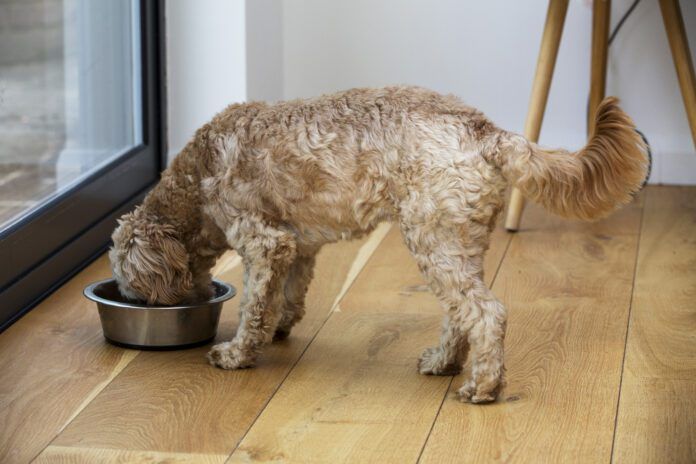
Feeding fresh food does not have to be all or nothing. Contrary to popular belief, you can add fresh foods into your dog’s dry dog food to provide nutritional benefits and increase palatability. Formulated to provide dogs with brain boosting whole foods, this simple and convenient fresh food topper is the perfect way to dip your toes into the world of fresh food diets without touching any raw ingredients! And you do not have to be a top chef to prepare this nutritious and delicious recipe together because no cooking is required.
Let’s get started!
NOTE: This recipe is intended for supplemental feeding only. It does NOT provide a nutritionally complete diet for dogs.
INGREDIENTS
The goal of this fresh food topper is to provide a supplemental recipe that focuses on brain supportive nutrients to improve cognitive health in senior dogs. However, the topper can be fed to dogs of all life stages. This recipe use a single protein and with human grade ingredients that are accessible in supermarkets:
- Salmon, canned in water
- Yogurt, plain, low fat
- Pumpkin, canned, without added salt or sugar
- Strawberries, frozen, unsweetened, chopped
- MCT Oil
- Lion’s Mane Mushroom Powder
- Nutritional Yeast
- Flaxseeds, ground
The ability to feed a home-prepared diet is not practical for many households but this does not exclude the option to include some fresh food in dry dog food diets. Fresh food helps to increase protein and palatability of kibble while decreasing carbohydrates. This is especially useful when ingredients are strategically selected with the goal of targeted nutrition to provide health benefits.
There is no secret that the brain ages with time which has a negative impact on cognitive function. However, there are multiple nutrients that play a role in cognitive health and feeding specific whole foods assist in providing targeted nutrients for brain support. The nutrients that play a vital role in brain function include but are not limited to Essential Fatty Acids (EPA, DHA, ALA), B vitamins, antioxidants, and probiotics.
COGNITIVE SUPPORT
Each ingredient listed in this fresh food topper recipe has been strategically selected to provide nutrients that support brain health.
| Ingredient | Nutrient(s) Provided | Benefit |
|---|---|---|
| Salmon, canned in water | Protein, EPA+DHA fatty acids, Vitamin D | Improved learning, improved memory, decrease in depression |
| Yogurt, plain, low fat* | Protein, Probiotics | Maintain gut health |
| Pumpkin, canned, without added salt or sugar | Fiber | Improved gut regularity |
| Strawberries, frozen, unsweetened, chopped | Antioxidants, Vitamin C | Protection against free radical damage |
| NOW Foods MCT Oil | Medium Chain Triglycerides | Readily reliable energy source for the brain, improve cognitive function, improved memory. |
| Real Mushrooms Lion's Mane Powder** | Beta-glucans | Modulate gut-brain axis, improve cognitive function |
| Anthony's Premium Nutritional Yeast Flakes | B-Vitamins | Improved neurotransmitter synthesis, mood regulation, and cognitive function |
| Anthony's Organic Flaxseed Meal | Fiber, ALA fatty acids, Magnesium | Protection against free radical damage. |
* Home fermented kefir can be substituted for yogurt when available.
**The Real Mushrooms Lion’s Mane Powder is the recommended brand due to their commitment to ensuring a product that provides over 30% beta-glucans without added grains or fillers.
CULINARY CLOSURE
Feeding fresh food does not have to be complicated and can be done without having to prepare raw food or spend time cooking. This supplemental recipe is safe to feed dogs of all ages but has been strategically formulated to provide brain supportive nutrients to assist in cognitive function in seniors. It is a convenient option to increase protein and palatability of dry food without making major diet changes.
Your dog will beg you for more!
BRAIN BOOSTER FRESH FOOD TOPPER BATCH CALCULATIONS
Below are the calculations to create a 5 pound batch of the recipe which is enough to supplement an inactive 60 pound dog for 10 days. For an in-depth review of amounts for different weights and activity levels see below. Store up to 4 days of prepared food in the refrigerator and store the remaining food in the freezer to prevent food spoilage. Frozen food can be stored indefinitely but it will lose nutrients over time. Therefore we recommend feeding all food withing 6 months of freezing. |
|
|---|---|
Recipe Terms Defined |
|
| Meal Prep Recipe Ingredients | Food ingredients to prepare the Brain Booster Fresh Food Topper Recipe. |
| Batch Prep Nutritional Supplements | Supplements that can be batch prepared into the Brain Booster Fresh Food Topper Recipe |
Meal Prep Recipe Ingredients |
|
Ingredient | Raw Weight |
Salmon, canned in water | 1.87 LB |
Yogurt, plain, low fat | 1.25 LB |
Pumpkin, canned, without added salt or sugar | 0.62 LB |
| Total | 5.0 LB |
Batch Prep Nutritional Supplements |
|
Nutritional Supplement | Quantity |
| NOW Sport MCT Oil | 2.00 TBSP |
| Real Mushrooms Lion's Mane Powder | 7.75 TBSP |
| Nutritional Yeast | 1.75 TSP |
| Flax Seeds (fresh ground) | 3.25 G |
What if I want to prepare more or less food than what is calculated?
The batch calculation table provides calculations for 5 pound increments. Double the amounts of all ingredients and supplements to increase the batch size to 10 pounds. Divide the amounts of all ingredients and supplements by 2 to decrease the batch to 2.5 pounds.
Are the supplements in the recipes necessary and safe?
All supplements in the recipe come from whole food sources versus synthetic supplements. The supplements listed come from human grade brands that operate in an FDA certified facility and are GMP certified. These brands perform third party purity tests and provide the nutritional analyses for their supplements. This criteria is important in ensuring the supplements are of high quality and provide the nutrients required for the recipe.
Preparation Instructions
There are only two steps to prepare this recipe. First, chop the strawberries into bite-sized pieces. Then, mix all the ingredients and nutritional supplements together thoroughly. All done!
Single-Serving Nutritional Informaton |
|||
|---|---|---|---|
Recipe Ingredient | Amount | Calories |
|
| Salmon, canned in water | 2.94 | OZ | 83.46 | G | 108 | KCAL |
| Yogurt, plain, low fat | 1.96 | OZ | 55.64 | G | 35 | KCAL |
| Pumpkin, canned, without added salt or sugar | 1.96 | OZ | 55.64 | G | 19 | KCAL |
| Strawberries, frozen, unsweetened, chopped | 0.98 | OZ | 27.82 | G | 10 | KCAL |
| Real Mushrooms Lion's Mane Powder | 0.75 | TSP | 01.50 | G | 0 | KCAL |
| Nutritional Yeast | 0.17 | TSP | 00.50 | G | 1 | KCAL |
| NOW Sport MCT Oil | 0.20 | TBSP | 02.94 | mL | 26 | KCAL |
| Flax Seeds (fresh ground) | 0.01 | OZ | 02.94 | mL | 2 | KCAL |
| Total | 08.0 OZ | 227.84 G | 200 KCAL |
Macro Nutrients - As Fed | Macro Nutrients - Dry Matter |
||||||
|---|---|---|---|---|---|---|---|
80.4% | Moisture | 184.24 G | 0.0% | Moisture | 0.00 G | ||
 | 8.9% | Protein | 20.38 G |  | 45.3% | Protein | 20.38 G |
3.5% | Fat | 8.10 G | 18.0% | Fat | 8.10 G | ||
4.9% | Carb. | 11.21 G | 24.9% | Carb. | 11.21 G | ||
1.0% | Fiber | 2.29 G | 5.1% | Fiber | 2.29 G | ||
1.3% | Ash | 3.04 G | 6.7% | Ash | 3.04 G | ||
FEEDING RECOMMENDATIONS BY BODYWEIGHT AND ACTIVITY |
||||||
|---|---|---|---|---|---|---|
| BODY WEIGHT | OBESE RISK | INACTIVE | LOW ACTIVITY | MODERATE ACTIVITY | ABOVE AVERAGE ACTIVITY | HIGH ACTIVITY |
| 10 LB | 2.00 OZ | 2.25 OZ | 2.5 OZ | 2.75 OZ | 3.25 OZ | 3.50 OZ |
| 20 LB | 3.25 OZ | 3.50 OZ | 4.00 OZ | 4.75 OZ | 5.25 OZ | 6.00 OZ |
| 30 LB | 4.50 OZ | 4.75 OZ | 5.50 OZ | 6.50 OZ | 7.25 OZ | 8.00 OZ |
| 40 LB | 5.50 OZ | 6.00 OZ | 7.00 OZ | 8.00 OZ | 9.00 OZ | 10.00 OZ |
| 50 LB | 6.50 OZ | 7.00 OZ | 8.25 OZ | 9.25 OZ | 10.50 OZ | 11.75 OZ |
| 60 LB | 7.50 OZ | 8.00 OZ | 9.50 OZ | 10.75 OZ | 12.00 OZ | 13.50 OZ |
| 70 LB | 8.25 OZ | 9.00 OZ | 10.50 OZ | 12.00 OZ | 13.50 OZ | 15.00 OZ |
| 80 LB | 9.25 OZ | 10.00 OZ | 11.75 OZ | 13.25 OZ | 15.00 OZ | 16.75 OZ |
| 90 LB | 10.00 OZ | 11.00 OZ | 12.75 OZ | 14.50 OZ | 16.50 OZ | 18.25 OZ |
| 100 LB | 10.75 OZ | 11.75 OZ | 13.75 OZ | 15.75 OZ | 17.75 OZ | 19.75 OZ |
| An 8 ounce serving of Brain Booster Fresh Food Topper Provides 200 Calories | ||||||
| Brain Booster Fresh Food Topper Calories Per Ounce | 24.9 | |||||
| Feeding Guideline Calculation Formula | Daily Calories Requirements ÷Brain Booster Fresh Food Topper Calories Per Ounce = Daily Feeding Amount | |||||
When To Start Training a Puppy
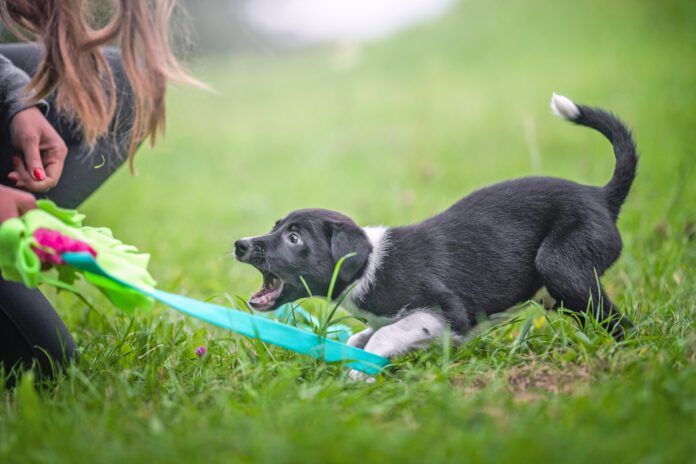
Puppy training begins when a dog is born. Every interaction your puppy has with other dogs and people is training. Your pup’s mom supervises play, stopping pup who gets “out of hand,” encouraging cleanliness (aka potty spots), and socialization.
How to Train a Puppy
While puppies don’t need serious obedience training at 5 weeks of age, simple training should start right away. Basic lessons begin as soon as the you bring your new family member home, whether it be the 10-week-old pup from a breeder or a 6-month-old that you’ve adopted.
Positive reinforcement is key to teaching your puppy the behaviors you want. Dogs of any age appreciate praise, treats, and toys. If your new to having a puppy—or it’s been a long time—it can help to sign up for a puppy class and work with a trainer who can advise you and help with problems that might appear during your puppies training.
What Is Puppy Socialization?
Socialization is a big part of training your pup, and it starts on Day 1. The golden window for socialization is around 12 to 16 weeks, which means this is the best time to gently expose your puppy to new sounds, sights, and adventures. While socialization never ends, this timeframe is extremely important to the puppy’s development. A puppy training class gives your puppy socialization with other dogs and an experienced trainer to keep everything under control and positive.
Make Puppy Training Fun
The goal of all puppy training should be fun and build confidence including housetraining. Programs like Early Neurological Stimulation (ENS) and Early Scent Introductions (ESI) start basic training right away. An Adventure Box provides some novelty as well.
Exposures to different surfaces, people, and food bowls all add to a puppy’s basket of experiences. Gentle handling gives a puppy positive associations with people. While you don’t want to overwhelm a puppy, you do want to provide options and different choices.
Many breeders get a pup started with various play gym obstacles, like low boxes to climb into or on top of, tunnels, wobble boards, etc. At least initially, these novel items are simply just there. The puppies can choose to explore them on their own with no pressure. Watching a bold sibling will often inspire a quieter pup.
When your puppy is in your home, you can start increasing his socialization by going to stores, like Home Depot, that allow dogs in to let your puppy experience new sites and sounds. Walks in quiet parks allow your puppy to watch people, dogs, and wild critters and see what’s happening around them. Never force a puppy to “deal” with something or endure a loud noise. Let the puppy make his own choices. If he’s afraid, don’t push the issue. Remember, you’re building trust.
Manding Is a Voice for the Puppy
Many owners and breeders now work on positive techniques such as “manding.” Basically, manding is where a puppy learns to use a behavior to get what the puppy wants. For example, sitting is commonly used, since it is a relatively easy thing to teach and it’s a readily identifiable behavior. Most puppies will include eye contact.
For example, puppies naturally try to jump up on you to get your attention, but if you ignore that jumping and give him attention (or a treat) when he sits and looks at you, he will learn that sitting is way to communicate that he wants your attention (or a treat).
Manding can circumvent undesirable behaviors. Puppies taught with manding principles will learn appropriate behaviors to communicate what they want. Proponents see manding as the puppy being empowered to get desired response by presenting this behavior.
No-Stress Training
An important consideration in training your puppy is not to stress him physically or mentally. Just like young children, puppies do not have long attention spans. Doing training in 10 five-minute sessions (or even shorter) over the day is preferable to doing a one-hour long marathon.
No Heavy Physical Training
Puppies mature at varying ages. Physical stress can lead to permanent bodily damage. While it is tempting to take your 3-month-old puppy on a mile run to gain a couple hours of quiet exhaustion, that is not appropriate for his age and undeveloped bones. Loose walks with plenty of food recalls are perfect as long as they’re short.
A puppy’s growth plates, which are located at the ends of his limbs, close anywhere from 8 to 18 months depending on breed. Your pup shouldn’t be jumping, running at speed, or working for long periods of time before then or you risk damaging the puppy’s limbs.
Raw Diet for Dogs: Should You?
I watch my Belgian Tervuren bitches do “natural and raw” food. While my boys prefer cooked and served on a platter, the girls will catch a rabbit, and they eat all of it. Hair, head, guts, along with muscle meat. Is this a natural raw diet? Not really.
Most raw diets concentrate on muscle meat and bones. At-home versions are heavy on neck bones, wings, and backs. And, importantly, supplements are needed to round out the diet and approach nutritional completeness.
Vital vitamins and minerals must be compensated for in a raw diet. Getting the calcium/phosphorus balance just right, especially for puppies, can be very challenging. Properly feeding raw you make yourself is not as easy as your dog catching and consuming an occasional rabbit.
Proponents of raw diets believe that raw is more natural and more nutritious. The catch is that commercial and even homemade raw diets aren’t mimicking a true natural diet for canids, which includes a variety of prey (dead and alive), as well as plants, berries, and vegetables.
Are Raw Diets Healthy for Dogs?
To be healthy, a raw diet must be balanced and complete, and there are commercial raw diets that do just that. Vegetables, fruits, and supplements may be included. Most manufacturers rely on freezing, freeze-drying, or dehydration to preserve the foods for shipping and storage.
Can a Raw Diet Safely Provide Good Nutrition?
Yes, it is possible, but it requires more expense and effort than the average dog owner can or will put in to do it correctly. If you choose to feed raw, do your research and make the effort to do it right. For some dogs, it does seem to help (anecdotally, as there are no clinical studies), probably from minimal ingredients as much as anything.
Is a Raw Diet Dangerous for Dogs?
The Centers for Disease Control and Prevention (CDC) recommends avoiding raw diets for pets, for both human and pet potential health problems. Many veterinarians agree.
Raw pet foods are in the news a lot due to cats dying from raw diets and raw milk infected with avian flu. Freezing and freeze-drying do not kill the avian flu virus. At this time, dogs appear to be resistant to the avian flu virus, but that could change with mutations.
In addition, an FDA study from 2014 found the risk of exposure to some foodborne bacteria (Salmonella, Listeria, or toxigenic E. coli) in frozen raw meat diets for pets purchased online is about one out of three. Remember, freezing and freeze-drying do not affect most viruses, although many bacteria and parasites will be wiped out. Any toxins present may be preserved.
While dogs in general are fairly resistant to these pathogens, many are not. Puppies with immature immune systems and seniors with weakened immune systems are at risk, along with any dog with an immunocompromising health problem, such as cancer. Also, people are more susceptible to those bacteria than dogs.
That means food hygiene while preparing these foods must be perfect. A household with human seniors, very young children, and anyone with an immune-related illness should avoid touching raw pet foods.
Then, why don’t my dogs who catch and eat rabbits get sick? These girls are eating truly fresh meat with no chance for bacterial growth or toxin production sitting on your kitchen counter thawing. (Of course, my dog could still get things like tapeworms from those “fresh” meals.)
When it comes to “natural food,” dogs have evolved to eating a wider variety of foods than their wild ancestors with domestication, such as utilizing starches better than wild canids. If you choose to feed raw, simply ensure you take all safety precautions and ensure that the food you purchase or make yourself is nutritionally complete.
Best Choices in Free Dog Training Apps
